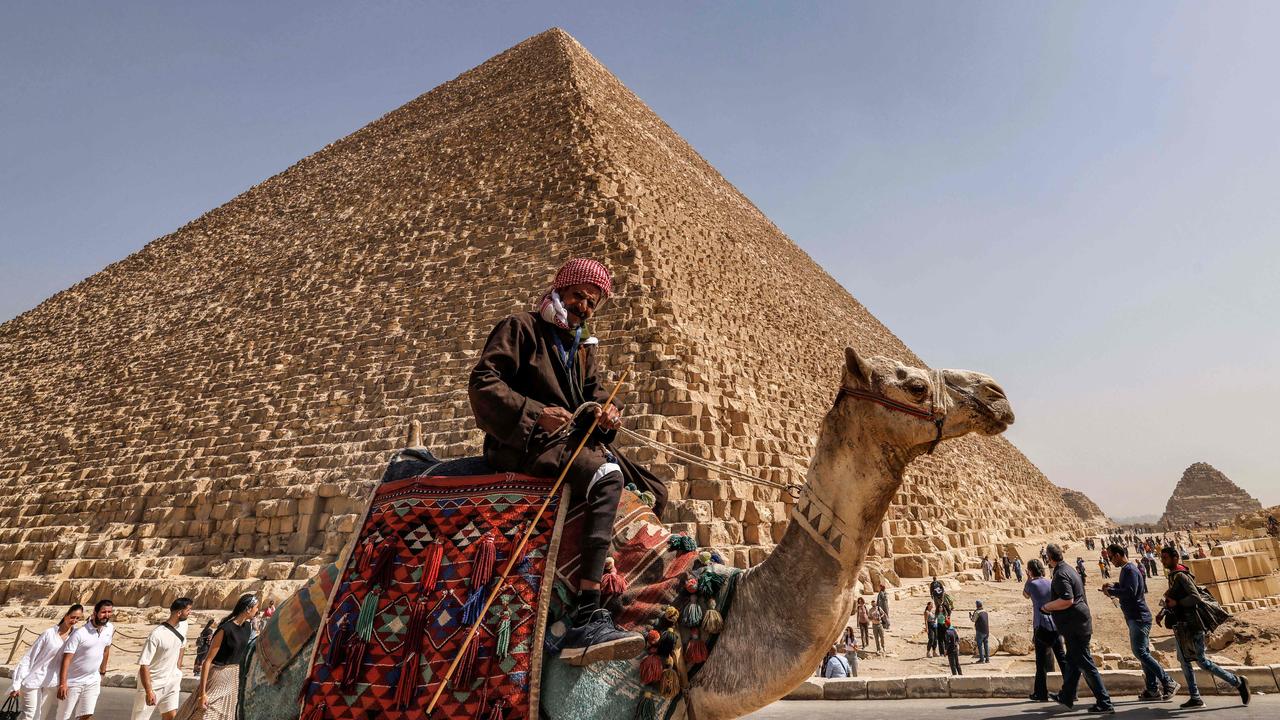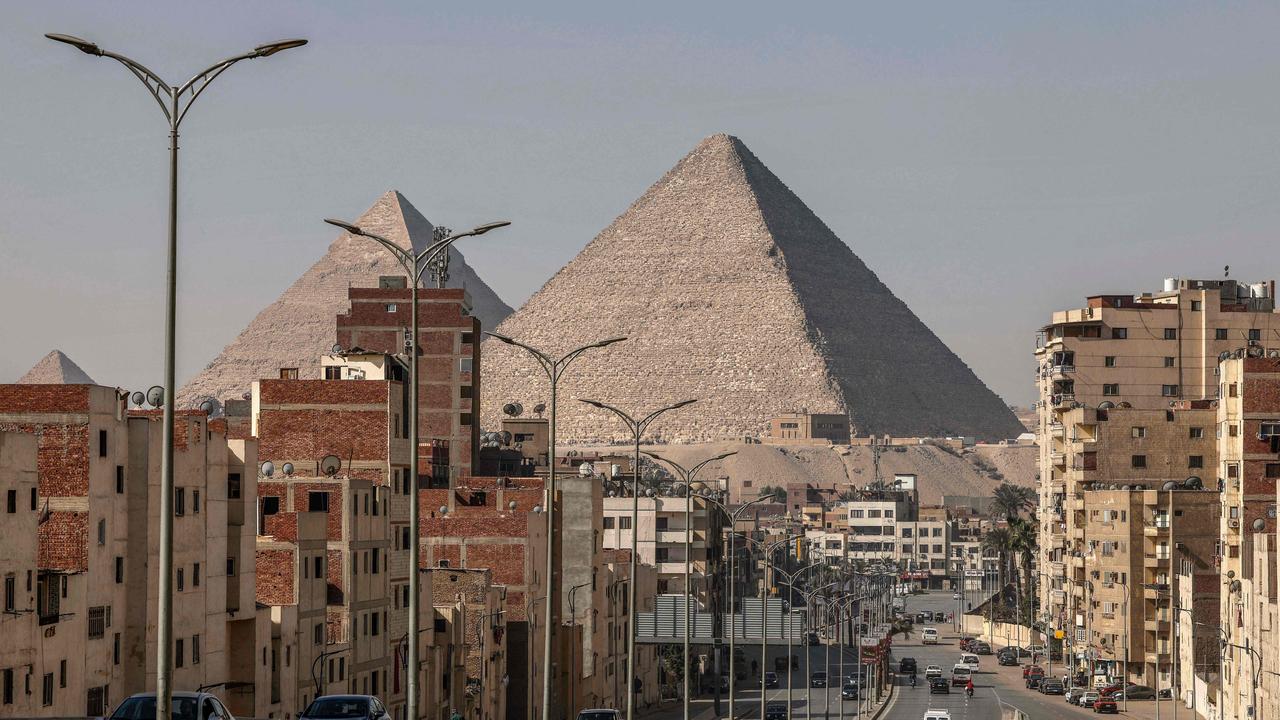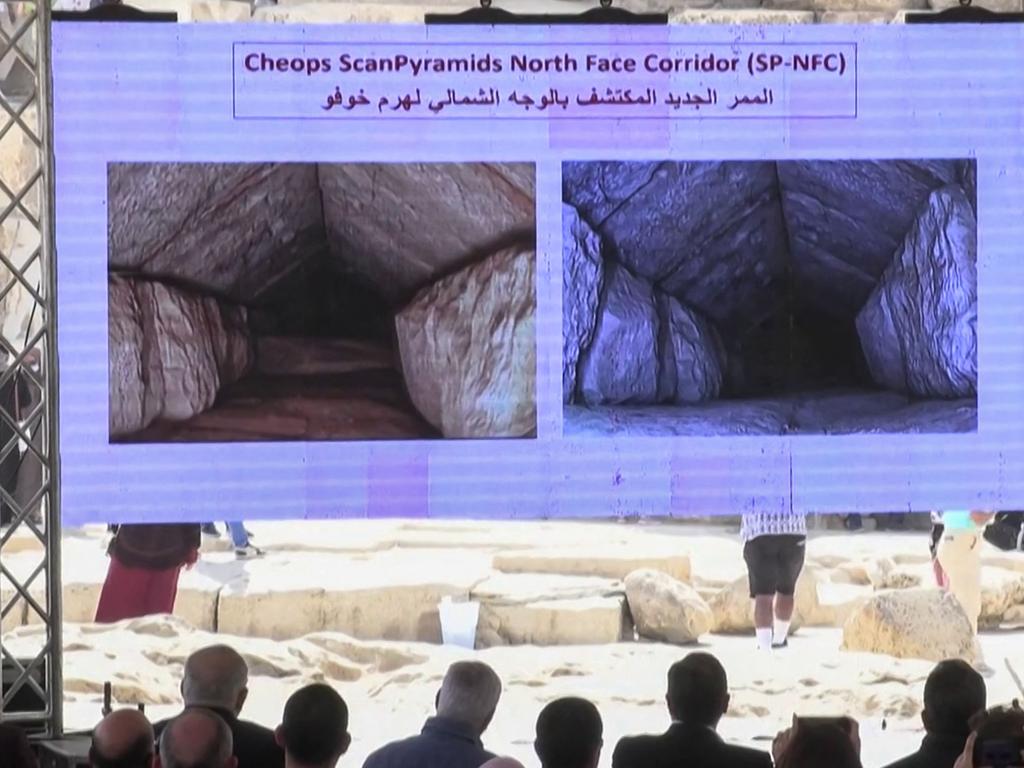Egypt unveils hidden corridor in Great Pyramid
Scientists have discovered a hidden passage inside Egypt's Great Pyramid more than 4500 years after it was built

READING LEVEL: GREEN
Scientists have discovered a hidden passage inside Egypt’s Great Pyramid*.
The passage is 9m long and more than 2m wide, and was found as part of a seven year international* research project, authorities announced on March 2.
Egypt’s Tourism and Antiquities Minister Ahmed Issa said the “gabled corridor*” with a triangular ceiling “was found on the northern face of the Great Pyramid of King Khufu*”.

The discovery was part of the ScanPyramids project*, launched in 2015 as a collaboration* between major universities in France, Germany, Canada and Japan and a group of Egyptian experts.
Archaeologist* Zahi Hawass, Egypt’s former antiquities minister*, heads the committee supervising the project, which uses advanced technology to visualise hidden parts of the pyramid’s interior without having to excavate* it.

The technology is a mix of infra-red thermography*, muon radiography imaging* and 3D reconstruction*, all of which the researchers say are non-invasive and non-destructive techniques.
The Great Pyramid, also known as Khufu, or Cheops, pyramid, is the largest in Giza, standing 146m tall. It is the only surviving structure of the seven wonders of the ancient world*.
Built some 4500 years ago, it has three known chambers, and like other pyramids in Egypt was intended as a pharaoh’s tomb*.

Dr Hawass said “there is a great possibility” the tunnel was built to protect the burial chamber.
“In my opinion, it is protecting the actual burial chamber of King Khufu,” he said.
It is not the first major find made by the international research project. In 2017, ScanPyramids announced the discovery of a passenger plane-sized cavity inside the Great Pyramid. This was the first major structure found inside the pyramid since the 19th century.
GLOSSARY
- Egypt’s Great Pyramid: the largest and oldest of the monumental tombs built in Giza for Egyptian pharaohs dating back more than 4500 years
- international: between or involving different countries
- gabled corridor: a corridor enclosed by sloping ends of a roof
- King Khufu: possibly the most famous Old Kingdom pharaoh, Khufu was the second pharaoh of the Fourth Dynasty
- ScanPyramids project: aims to scan Old Kingdom Egyptian Pyramids to detect the presence of unknown internal voids and structures
- collaboration: the action of working with someone to produce something
- archaeologist: a person who studies human history and prehistory through the excavation of sites and the analysis of artefacts and other physical remains
- antiquities minister: the Egyptian government organisation which serves to protect and preserve the heritage and ancient history of Egypt
- excavate: remove earth carefully from an area in order to find buried remains
- infra-red thermography: makes an image of something by recording the surface heat produced by different objects
- muon radiography imaging: similar in principle to radiography (imaging with X-rays) but capable of surveying much larger objects
- seven wonders of the ancient world: the pyramids of Egypt, the Hanging Gardens of Babylon, the statue of Zeus at Olympia, the Mausoleum at Halicarnassus (the tomb of a king), the Temple of Artemis (Diana) at Ephesus, the Colossus of Rhodes (a statue), and the Pharos (lighthouse) of Alexandria
- pharaoh’s tomb: a resting place for a pharaoh’s physical body that contained all the things ancient Egyptians believed their ruler would need in the afterlife
EXTRA READING
Stolen sarcophagus lid returned to Egypt
Ancient tool find sparks Stone Age mystery
QUICK QUIZ
- What did scientists discover inside Egypt’s Great Pyramid?
- How was this discovery made?
- Name archaeologist Zahi Hawass former job.
- Who did the tomb in the Great Pyramid belong to?
- What is Dr Hawass’ opinion on why the tunnel was originally built?
LISTEN TO THIS STORY
CLASSROOM ACTIVITIES
Tomb Fit for a Pharaoh
The great Pyramids are an amazing piece of architecture built so long ago. It had to be fit for the burial of a very important person, a Pharaoh.
If you had to design a modern-day tomb, fit for a very important person in our country, or the world (King, Prime Minister, President) what would it look like and what security measures would it include?
Sketch your design for your tomb and name the important elements.
Share with a small group of classmates.
Time: allow 30 minutes to complete this activity
Curriculum Links: Design and Technologies, History, Visual Art, Critical and creative thinking.
2. Extension
What do you think this newly discovered passage with built into the Great Pyramid for?
Do you think they might find any more surprises using this new technology?
Time: allow 15 minutes to complete this activity
Curriculum Links: English, History, Critical and creative thinking.
VCOP ACTIVITY
To sum it up
After reading the article, use your comprehension skills to summarise in a maximum of three sentences what the article is about.
Think about:
- What is the main topic or idea?
- What is an important or interesting fact?
- Who was involved (people or places)?
Use your VCOP skills to re-read your summary to make sure it is clear, specific and well punctuated.

